I was exploring the vast holdings of my digital music empire and came across quite a few songs named C.C. Rider, See See Rider, Easy Rider Blues, I Know You Rider… basically, several variations on the theme of “getting rode,” if you will.
And that led me to an interesting passage in the book The Language of the Blues, by our friend Debra Devi: “During the Civil War, C.C. stood for Calvary Corporal. Riding is probably the most common metaphor for sexual intercourse in the blues. The rider is a sexual partner, a steady lover. Was a woman singing to her soldier lover in ‘C.C. Rider’?”
Then Debra works against herself a little bit by pointing out that the term “rider” was used by men and women alike – from Ma Rainey’s original See See Rider Blues in 1924 to Eric Burdon and The Animals’ hard-rockin’ C.C. Rider in 1965. And the latter version came on the heels of a classic medley by Mitch Ryder and the Detroit Wheels (see video below). In four decades, the song had morphed from Ma’s plaintive “made me love you, now your gal has come” to a more defiant “now your man has come”… then Mitch spent the other half of the medley begging Jenny to “take a ride.” Apparently he was planning an orgy and forgot to tell the radio programmers.
Had Debra’s book been published back in the Sixties, media censors might have viewed the grand tradition of “rider” songs in a far different light. Here’s another excerpt from the book: “Using a condom is ‘riding with the saddle on.’ If a woman has sex with several men in a row, she is ‘riding the train’ and her last partner is ‘the caboose.’ Riding the train can also mean to use cocaine” (as any self-respecting Deadhead can tell you).
The most common way to extend the “riding as sex” metaphor is to throw a horse into the mix – especially one that bucks. My favorite example is a song by the late Piedmont-style fingerpicker Precious Bryant that offers a friendly warning to potential suitors: Don’t Jump My Pony
The metaphor also was used to compare a favorite sexual partner with a fine automobile. Not sure how your [insert term for relationship here] would feel about that, but my wife would be fairly offended – unless, of course, we’re talking about a Lamborghini or even a fully loaded Lexus. Debra’s favorite entry in this catalog is a song by Blind Willie McTell that has his lover riding him like a Cadillac: Scary Day Blues
Before we enter the realm of cheap porn (or are we there already?), I thought I’d share with you a few other examples of what Masters & Johnson might refer to as Human Sexual Response: The Ongoing Evolution of the Riding Metaphor in Song.
- According to Debra, early references to an “easy rider” in blues could mean “a man who is a prostitute’s lover and sponges off her earnings.” In the next tune by Blind Lemon Jefferson, the term seems directed at a particularly skilled lover, although I’m not exactly sure how to parse this line: “I got a gal across town, crochetin’ all the time. Sugar, you don’t quit crochetin’, you’re gonna lose your mind.” Sounds like Blind Lemon had little regard for a woman who could get by just fine on her own, thank you. Easy Rider Blues
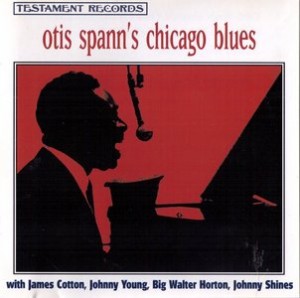 Here’s another theory about C.C. Rider: As male performers adopted the song, C.C. became a woman of questionable virtue, and the man either coming or going was her pimp. Not sure that’s what Otis Spann had in mind… seems like he truly loves the woman regardless of her profession. And if he can’t have her, he’ll use a pistol “as long as I am tall” to make sure no one else can. Blues? Hell, this is Shakespearean Tragedy – which might help explain the enduring quality of the song. See See Rider/Spann
Here’s another theory about C.C. Rider: As male performers adopted the song, C.C. became a woman of questionable virtue, and the man either coming or going was her pimp. Not sure that’s what Otis Spann had in mind… seems like he truly loves the woman regardless of her profession. And if he can’t have her, he’ll use a pistol “as long as I am tall” to make sure no one else can. Blues? Hell, this is Shakespearean Tragedy – which might help explain the enduring quality of the song. See See Rider/Spann
- What Mississippi John Hurt lacked in menace, he definitely made up for in charm. His gently flowing version of C.C. Rider was recorded in 1965, just up the road from the Rubber City at Oberlin College. It was the tail end of the traditional folk music revival that shone a bright light on long-forgotten blues artists such as Hurt, Son House, Elizabeth Cotten and Skip James. So here’s to those well-mannered white kids at Oberlin, and thousands of old folkies everywhere… I now forgive you for the Kingston Trio. C.C. Rider/Hurt
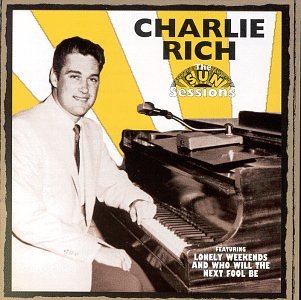 Back in the early Seventies, Charlie Rich was one of country music’s biggest performers, with two massive hits under his gold-plated belt – Behind Closed Doors and The Most Beautiful Girl. But those tunes paled in comparison to the bluesy, soulful stuff he recorded for Sam Phillips at Sun Studios from 1958 to 1962. While in Memphis, he came up with one of the coolest arrangements I’ve ever heard of C.C. Rider, and then sold it like he wrote the damn song… One of his best. C.C. Rider/Rich
Back in the early Seventies, Charlie Rich was one of country music’s biggest performers, with two massive hits under his gold-plated belt – Behind Closed Doors and The Most Beautiful Girl. But those tunes paled in comparison to the bluesy, soulful stuff he recorded for Sam Phillips at Sun Studios from 1958 to 1962. While in Memphis, he came up with one of the coolest arrangements I’ve ever heard of C.C. Rider, and then sold it like he wrote the damn song… One of his best. C.C. Rider/Rich
- R&B singer Chuck Willis scored the biggest hit with C.C. Rider when his version reached #12 on the pop charts in 1957 (his Atlantic single even led to a national dance craze, the Stroll). But I’m partial to a later recording by R&B powerhouse LaVern Baker, who helped launch an entire genre – American soul music – with her 1963 cover. Featuring Buddy Lucas on tenor sax, this blistering cut delivered another hit for Atlantic while closing out Baker’s remarkable 10-year run at the label. See See Rider/Baker
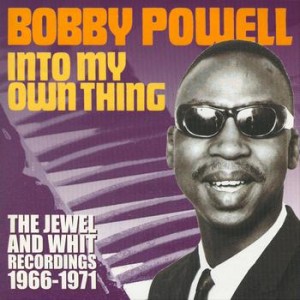 Bobby Powell, a gospel singer from Baton Rouge, is responsible for one of the more obscure versions of C.C. Rider – a deep soul cut recorded for the small Whit label in ’65. You can definitely hear the gospel influence and a healthy dose of the blues, especially in the song’s unlikely intro: “What do you do… tell me, what do you say, when the one you love refuse to look your way.” Then he really turns up the heat in the song’s main section, joined by churning horns and a hard-grinding rhythm. A classic slice of southern soul. C.C. Rider/Powell
Bobby Powell, a gospel singer from Baton Rouge, is responsible for one of the more obscure versions of C.C. Rider – a deep soul cut recorded for the small Whit label in ’65. You can definitely hear the gospel influence and a healthy dose of the blues, especially in the song’s unlikely intro: “What do you do… tell me, what do you say, when the one you love refuse to look your way.” Then he really turns up the heat in the song’s main section, joined by churning horns and a hard-grinding rhythm. A classic slice of southern soul. C.C. Rider/Powell
- Let’s cool things off with an all-instrumental version by the master of the B3, Jimmy Smith. Here he’s joined by another master, guitarist Kenny Burrell, on a ’59 session for the Blue Note label. It’s a long way from Ma Rainey, but I’m sure she would’ve approved. See See Rider/Smith
I Know You Rider… The lineage of this song is a little different, but the riding metaphor is still front and center. Often credited to the Grateful Dead, it’s actually a traditional song adopted mostly by female blues artists. Back in the Fifties, a guy named Bob Coltman stole it from the folkie bible (American Ballads and Folk Songs, published in 1934 by John and Allen Lomax), performed it extensively and handed it off to other folk revivalists. Before long, Sixties rock bands were playing it too, and the Dead soon made it a staple of their live shows. Here’s a clip from ’72 (diehard Deadheads will tell you it was a very good year for the band)…
Mitch Ryder and the Detroit Wheels… puttin’ the moves on C.C., Jenny and god knows who else back in 1966…
Old Crow Medicine Show… keeping the C.C.-riding tradition alive at the 2011 Bonnaroo Festival (they look a little baked to me – maybe it was the heat)…




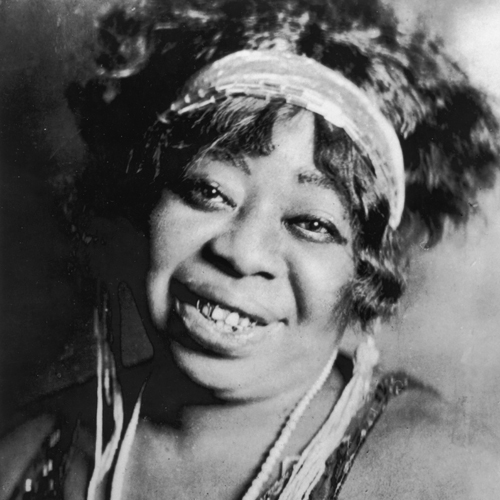

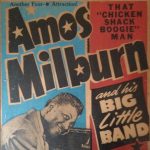

Hey, thanks for quoting from my book and really expanding upon the artists and songs that reference C.C. Rider. Some things are just meant to remain a mystery!
Thanks Debra. Enjoyed pulling this one together and revisiting all those colorful references in your book. Also gave me a great opportunity to feature some of my favorite country blues artists!
In spite of Mitch Ryder sleep walking through the lip sync, I’m partial to his version. If for no other reason than it introduces the almost famous, but definitely badass, Jim McCarty on lead guitar.
Yeah I’d forgotten how great that solo is. Another fine entry in the Shredding Hall of Fame.
McCarty did some incredible work later with Cactus. Although most Cactus albums are pretty uneven and considered low-brow in some circles, McCarty blows a box of 50 amp fuses with his work on Parchman Farm, Evil, and One Way or Another.